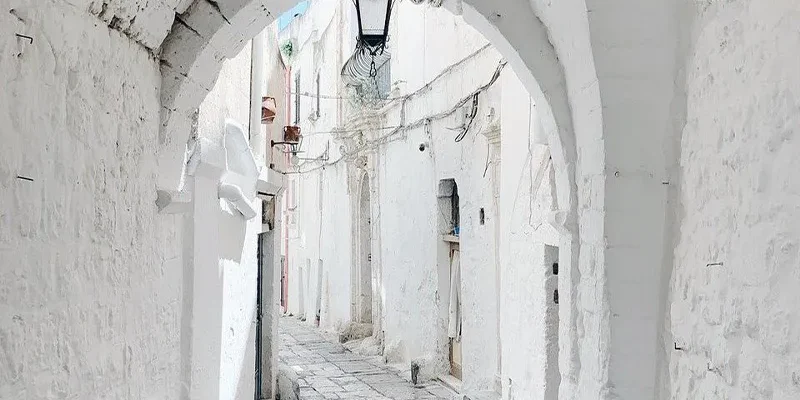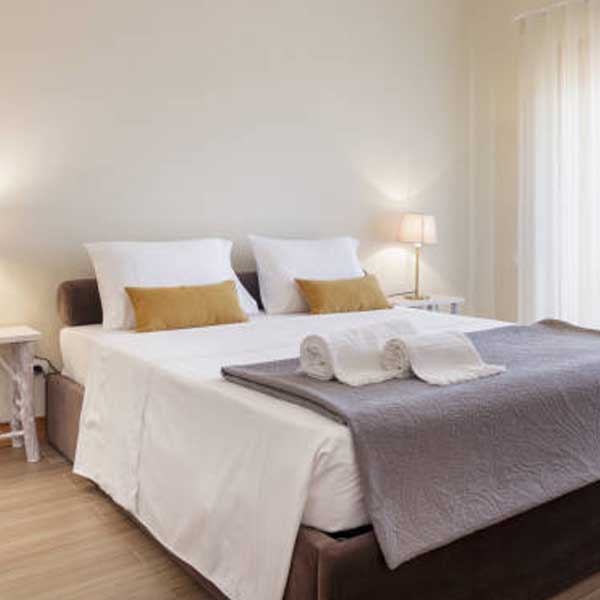- Payment Options
- Terms Conditions
- US
- IT
- ES
- My Bookings
- Add Your Review

Details
LOCATION TYPE
Town
DISTANCE
17.0Km
ADDRESS
72017 BR
The nickname "white city," also known as Ostuni
The nickname “white city,” as Ostuni is also known, derives from the typical color that the houses in the old Terra district, the town’s ancient fortified suburb, had. In fact, a walk through the narrow streets with strictly white houses in the historic center will allow you to immerse yourself within a world consisting of narrow alleys, cobblestone streets framed by the marvelous view for a fairy-tale setting. The perfect mix of elegance, popular sincerity and maze of streets in which to get lost contribute to making Ostuni magical not only to the eyes of those who visit but also to those who look at it.
The Co-cathedral is located on the highest point of the city, built in the 15th century it has a beautiful facade in late Gothic forms; opening on the main facade are three portals surmounted by a rose, the rose window placed on the central portal composed of 24 finely carved rays stands out. The interior has a Latin cross with three naves redone in 18th-century forms; the Baroque side altars are very interesting. Next to the Cathedral, facing each other, are also two beautiful eighteenth-century buildings: the Bishop’s Palace and the Seminary, connected by a stone bridge called “the Loggia.”
Also on Cathedral Square, inside the former Carmelite Monastery of Santa Maria Maddalena dei Pazzi, is the “Museum of Preclassic Civilizations of the Southern Murgia.” On display inside the museum is the skeleton of a woman whose womb held the remains of a fetus, buried 28,000 years ago and found during an excavation campaign at the cave of Santa Maria di Agnano. In addition to the Woman of Ostuni, artifacts referable to the Neolithic, Messapic and medieval periods from around Ostuni are on display. Attached to the Monastery is the Church of San Vito Martire, among Ostuni’s most important monuments with its Rococo lines.
Ostuni has something to offer for every season of the year. However, some events stand out because they are particularly felt as traditional by locals. These include the traditional Feast of St. Oronzo, protector of the city. From August 24 to 27, the Cavalcade of St. Oronzo is held, a must-see event for Ostuni residents and passing tourists: the silver statue of the patron saint is carried in procession by horsemen in an atmosphere that is certainly picturesque and touching.
Joining this event is the Festival of Old Times, dedicated precisely to the vanished trades to which local artisans pay tribute. Of traditional, of course, can only be mentioned the cuisine, which is typically Apulian: “ncapriata,” a particular cream of broad beans, and cappello, a timbale of zucchini and eggplant, accompany a mint omelet or can be served with a good plate of taralli, or rice with potatoes and mussels or, again, with orecchiette with turnip tops.
Within the historic center, in addition to the famous white-colored houses, there is no shortage of stately palaces, one example being the baroque Palazzo Zevallos, residence of the Neapolitan feudal lords who harassed the city for nearly two centuries.
Other fine church monuments in the historic center include: the 17th-century Church of the Holy Spirit with its beautiful Renaissance portal and the Little Church of St. James of Compostela built in 1423.
From its 20 meters, the Spire of St. Oronzo towers over Piazza Libertà. With a statue of the patron at the top, it is an ex voto erected in 1771 as thanksgiving for preserving the city of Ostuni from the plague of the 1700s. A few kilometers from the city is also the shrine named after the saint, built in the 1600s near a cave where he had found refuge. To the left of the church you take a staircase that leads to a spring believed to be miraculous.
Ostuni is also very famous for its sea; the white city of Puglia has received the Blue Flag and the Five Sails from Legambiente several times; it has been called the city with the cleanest sea in Italy. The coastline is as long as 20 kilometers, including different environments: long beaches, small inlets between rocks, beautiful dune systems and Mediterranean scrub. Costamerlata beach is the most famous, a beautiful bay of fine sand with shallow water and crystal clear waters; also very beautiful and popular are the beaches of Diana Marina and Rosa Marina, also with very clear and soft sand; on Monticelli beach, on the other hand, there are stretches of low rocks and reefs with higher depths than the others; among the most popular beaches is also Pilone beach, completely immersed in Mediterranean scrub.
The countryside is dotted with Fortified Masserias whose construction spread between the 16th and 17th centuries; among all the best known are: the Masseria Rialbo di Sopra which is also the oldest, the Masseria Spagnulo and the Masseria Santo Scalone.
Here we report some of the main places of historical, cultural and scenic interest.
RELIGIOUS BUILDINGS:
Concattedrale
Ex Monastero delle Carmelitane
Chiesa di S.Vito Martire
Chiesetta dello Spirito Santo
Chiesetta di S.Giacomo di Compostela
Santuario di S.Oronzo
ART AND CULTURE:
Museo delle civiltà preclassiche della Murgia meridionale
NEAR THE SEA:
Baia di Costamerlata
Spiaggia Diana Marina
Spiaggia Rosa Marina
Spiaggia Monticelli
Spiaggia del Pilone
PLACES OF INTEREST
Centro storico “La Terra”
Palazzo Vescovile e Seminario
Palazzo Zevallos
Guglia di S. Oronzo
Masserie fortificate


